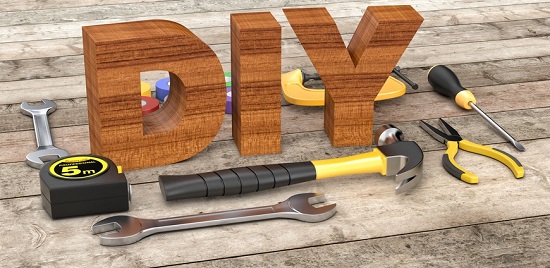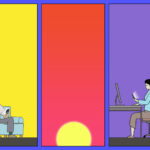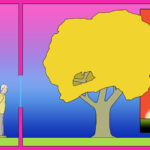I empathize with health care professionals who open the door and see me sitting there. I have alcoholism, one of the most puzzling and pernicious addictions to treat. And no consensus exists on what alcoholism or other addictions really are or how to treat them. Add the conundrums that addiction is often accompanied by mental illness, symptoms of trauma, physical illness, emotional and physical pain, and sleep disruption, well, that ranks it with the world’s impossible puzzles. If the smiling health care professional is inwardly groaning, I get it.
Still, to quote Talk Talk, “It’s my life.” As a do-it-yourself addictions recovery practitioner, the first order of business for me is to get myself health care. What can I do to help health care professionals help me?
Let’s follow Stephen Covey’s advice: “Begin with the end in mind.”
What do I want to have happen as a result of consultations with health care professionals who might have help for me with addiction?
- Greater understanding of my unique story, i.e. my “case conceptualization.”
- More data a) to refine and deepen my understanding of my case and b) to provide increasingly comprehensive information during subsequent consultations with additional professionals.
- Treatment recommendations that might foster my stability. The more stable my inner system is and the more stable my living situation is, the more likely I am to progress rather than regress.
This post addresses #1 and #2 in the above list.
1) Case conceptualization
Case conceptualization is a counseling term for a description of what is thought to be going on with a person and why. It’s like a Wikipedia article on a person and his or her problems. What we do know about treating addiction is that it requires helping the whole person. But given the current limited state of knowledge of addiction, limited understanding of addictions treatment, and limited access to treatment, a person with addiction just has to try to puzzle out the “wholeness” for himself or herself.
If I envision my case as a jigsaw puzzle in a new box, I open the box and see a whole bunch of puzzle pieces. I take out a puzzle piece. If I recognize it, I can put it where it goes. If I don’t recognize it, what do I do?
As someone with addiction, I’m likely to have what Maia Szalavitz terms an “outlying temperament” which means that the volume on my inner state spikes or plummets very fast. (More about that in the last third of this post.) I tend to feel overwhelmed immediately when I don’t know what to do or don’t understand, either feeling highly anxious or deeply hopeless. Consciously looking at what’s going on with me is probably going to be distressing. I’ve got to engage my mind to help myself through these shifts in intensity.
If I don’t know where the puzzle piece fits, even what it represents, the piece goes back in the box, perhaps in a corner with other unknown pieces.
This piece and others I can’t identify are the ones with which I need help.
A professional has knowledge, training, expertise, experience and membership in expert networks that I do not. Using the jigsaw puzzle metaphor, a professional can look at a puzzle piece and identify it or, if the professional can’t, knows someone who can. Or the professional may rank the piece as more important or less important than I can. The professional may look in the box and be able to quickly identify pieces I haven’t gotten to. The point is that the professional can help me do what I cannot do for myself.
(The problem with DIY addictions recovery is that it’s actually impossible. I don’t know enough. And I don’t have enough credentials to access needed resources. I simply must work with others.)
While invaluable, a professional will have finite expertise and I will have finite time with that professional. In DIY addictions recovery, my priority during the appointment needs to be getting as many puzzle pieces identified as I can in the time we have. Then my job is to come home and start fitting them into the bigger picture.
2) Data
I need data for two reasons: a) to get more information with which to understand my own case, and b) to have updated information available for the next professional who might help me.
If I walk into an appointment wanting to a) tell my story or b) receive reassurance, I will misuse my time with this precious resource. It’s legitimate to want to be heard and to be comforted. These might well be byproducts of the appointment. But I need to get those needs met in other ways. This is a not-to-be-missed opportunity to have someone look at my box of puzzle pieces and see what they see.
To help the health professional help me, I need to provide as much data as possible – presented as concisely as possible due to short appointment times – to help the professional get up to speed on my case as quickly as possible.
If I can provide even a single one of these documents, ideally contained in a binder in this order, I offer invaluable help to someone who wants to help me:
- One-page list of current and past treatments, including current and past medications.
- Results of blood work.
- Timeline (for more on the timeline, scroll down to “Contribute to my loved one’s documentation” in this post.)
- Copies of previous medical records organized in reverse chronological order, i.e. most recent first, including hospitalizations, stays in treatment centers, reports from labs, scans and x-rays.
- My “case conceptualization,” i.e. my typed or handwritten narrative of what I think is up with me and why. (If writing is difficult for me, perhaps I can find someone to listen and type as I speak.)
It’s a lot, isn’t it?
The challenge with documenting one’s own case is that most people with addictions don’t feel very good and just aren’t up to the task. In addition, they may have cognitive limitations due to substance use, as well as due to the very impairments the illness of addiction itself makes to executive systems in the brain. Fitting puzzle pieces together can simply be impossible. Plus we have that outlying temperament that makes looking at each piece feel epic. We’re not wrong or bad for having challenges. We have a brain condition, a grave and serious illness. Of course we’re going to have challenges.
This is why if someone with addiction can find someone to help them document themselves, or serve as advocates as they navigate the system, it’s hugely helpful. Perhaps a trustworthy parent, partner, daughter or son, minister, friend, even neighbor could help! Recovering from addiction is hard enough. The barriers to treatment make it almost impossible. It is not weak to ask for or to accept help.
If you can’t do anything else, just keep receipts and printouts – of appointments, medications, any document related to your health care. You might feel better soon and can perhaps put them in reverse chronological order. Or someone might come along who can help you piece together your story.
Image: iStock
Last updated 10/01/16
. . . . .
A table of contents for the entire DIY Addictions Recovery series of posts is here.
New posts refer to subsequent posts and I’m doing my best to link them up in an understandable way. I update posts as I learn more.
This post is part of a series contained on this blog in the DIY Addictions Recovery category.
If you have suggestions or feedback, I welcome them. Feel free to contact me.
Disclosure and disclaimer: I am a counselor at a community services agency. The opinions expressed here are mine alone and do not necessarily reflect the positions of my employers, co-workers, family members or friends. This content is for informational purposes only and is not a substitute for medical or professional advice. Consult a qualified health care professional for personalized medical and professional advice.






